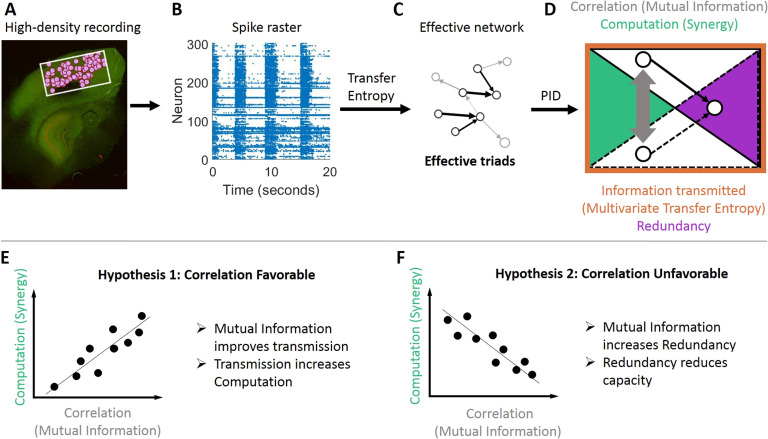Figure 1. .
Methodological approach taken to ask if correlated activity is favorable or unfavorable for synergistic processing in organotypic cultures of mouse cortex. (A) Hour-long recordings of spiking activity were collected in vitro from organotypic cultures of mouse somatosensory cortex. (B) Spike sorting yielded spike trains of hundreds of well-isolated individual neurons. (C) Effective connectivity between neurons was determined by quantifying transfer entropy between spike trains. The resulting effective networks were analyzed to identify all effective triads consisting of two effective connections to a common receiver. (D) For each triad, we quantified how correlated the activity of the senders was with mutual information (gray arrow) and decomposed the total information transmitted to the receiver (measured via multivariate transfer entropy, orange perimeter) into redundancy and synergy components (via partial information decomposition, indicated with purple and green areas, respectively). (E and F) We sought to differentiate between two alternate hypotheses. (E) Predicted relationship between mutual information and synergy if correlated activity is favorable for computation. (F) Predicted relationship between mutual information and synergy if correlated activity is unfavorable for computation.

